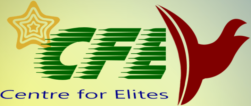[the_ad id=”476″]
In primary science teaching, emphasis is placed on the development of scientific process skills in pupils. It is important for you to understand that science is a body of knowledge developed through the scientific method. The scientific method involves problem solving using scientific process skills. It must be emphasised here that as a teacher you need to have the necessary skills and positive scientific attitudes to design and facilitate science activities in class.

The concept of Scientific Process
Processes in science at times are called process skills, they are characteristics of the method through which scientific knowledge is generated, established and developed. Process skills are fundamental to science, allowing the teachers and learners to conduct investigations and reach conclusions. Science learning and developing process skills are closely connected. Since most of the science that primary school teachers will be dealing with emphasise material centred activity, it is essential that they are competent in basic science process skills through hands on science teaching experiences.
Through this, the skills are brought into the classrooms and the teachers are the agents. They need to be inducted to the process skills during their training. The process is intractably linked to communication skills. Though the processes apply to other areas of education, they become more meaningful to science when they are defined and considered in a scientific sense.
Scientific Process Summary
The table below is a summary of the science process skills. The summary covers both basic and integrated science process skills discussed in the previous article.

Science Process Skills
|
Process of Science |
Competency Indicators |
|
Observing |
• observe objects or events in a variety of ways using one or more of the senses • Identify properties of an object, i.e. shape, colour, size, and texture. • Use indirect methods, i.e. hand lenses, microscopes, thermometers, to observe objects and events. • Observe objects or events by counting, comparing, estimating and measuring. |
|
Classifying |
• identify properties useful for classifying objects • group objects by their properties or similarities and differences • construct and use classification systems |
|
Inferring |
• suggest explanations for events based on observations » distinguish between an observation and an inference |
|
Predicting |
• Forecast a future event based on prior experience, i.e. observations, inferences or experiments. |
|
Measuring |
• Compare and order objects by length, area, weight, volume, etc., • Measure properties of objects or events by using |
En savoir plus sur Centre for Elites
Subscribe to get the latest posts sent to your email.
